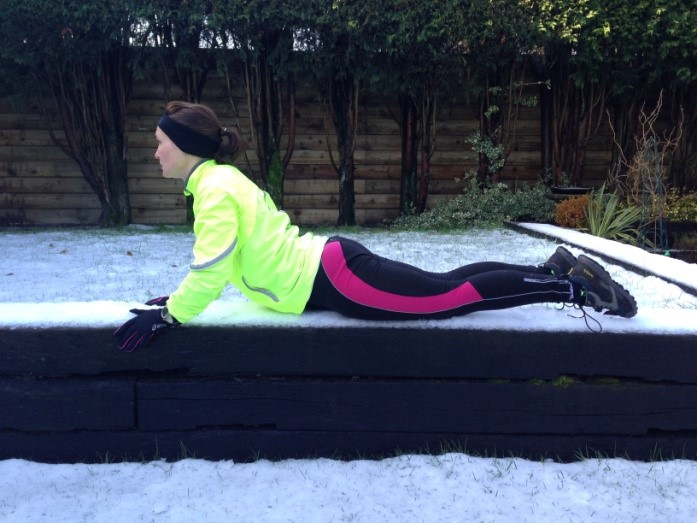Well I promised you I wanted to help you build your core. Today is the start of the 12 four-weekly posts to encourage you to build up your core strength to supplement your Tuesday and personnel training.
These exercises are republished by kind permission of Carolyn.
What do we mean by core?
Well this refers to the muscles that control our trunk, meaning our abdominals, waist and back muscles. Strictly speaking, we should include the diaphragm and pelvic floor too! These muscles are in layers and the ones closest to the core, or centre, are responsible for good posture and movement between the ribcage and pelvis. These muscles need to work for long periods at low intensity, only 30% effort or contraction required.
Why is the core important to runners?
Think of our bodies as machines. If we can keep our core (ribcage to pelvis) stable and moving smoothly, this allows our hips to move correctly and subsequently allowing our knees to stay in line and our feet to strike the ground correctly. Keeping all the joints in a good position will reduce wear and tear of the joint surfaces. In addition, the soft tissues (ligaments, tendons, nerves and muscles) will be held in the correct alignment therefore reducing strain and abnormal forces.
These Core Corner posts will present a different exercise every four weeks to help you strengthen your core body control, keeping the ‘machine’ in good working order. By ‘strengthen’ we do not mean power or intense contraction, but we mean a strong connection between the brain and the muscles. It is this brain to muscle communication that needs strengthening, so that our core muscles do not switch off. You should do at least 2 core sessions per week, with practise, you will be able to contract your core as you run.
Stretch is best!
When it comes to good posture, joint and soft tissue alignment and body control, we need to perform static stretches. Our muscles shorten in length when we contract them. The opposite muscles then become long. If left unchecked, the short ones become inefficient because they can’t contract anymore to create power. The long ones become over stretched, losing their elasticity and can no longer provide balance to the body segments. Prolonged and repetitive sitting is the enemy!
The action of running is also very repetitive and so some muscles can potentially become very short. Tight short muscles can pull your joints out of line, causing mechanical stress through the surfaces, whilst also making muscle power inefficient too. Think of your skeleton as a tent where the muscles are your guy ropes. For your tent to be stable, your guy ropes should all be under the same tension. Stretching will lengthen tight short muscles, bringing the skeleton back in line whilst keeping the longer muscles elastic.
Each month the web post will present a stretch for you to try after your runs.
Note dynamic stretches are something quite different, used before a race to warm up the connection between your brain and your muscle action.
Now for the first exercise.
Core exercise 1 – The Plank
Put your weight through your forearms with your elbows directly under your shoulders. Tuck your toes under and lift your body off the mat. Keep a horizontal body, shoulders, bottom and legs. Use your abdominals, buttocks and quads (front of thighs) to maintain this position. Pull your tummy button towards your spine without arching or flattening the spine. Remember just 30% muscle effort. Don’t forget to breathe! (Snowy ledge optional)!
Hold for 30-60 seconds, repeat 3 times.
January 2013 Stretch – Back Extension
Lie on your front with your hands under your shoulders. Push through your arms, keeping your hips on the ground. Keep your elbows soft and your shoulders away from your ears. Keep your face forward, not to strain your neck. This is great for putting your spine back into alignment. Don’t hold your breath!
Hold for 30 seconds, repeat twice.
Good luck. Start your 2020 Resolution tomorrow!!





